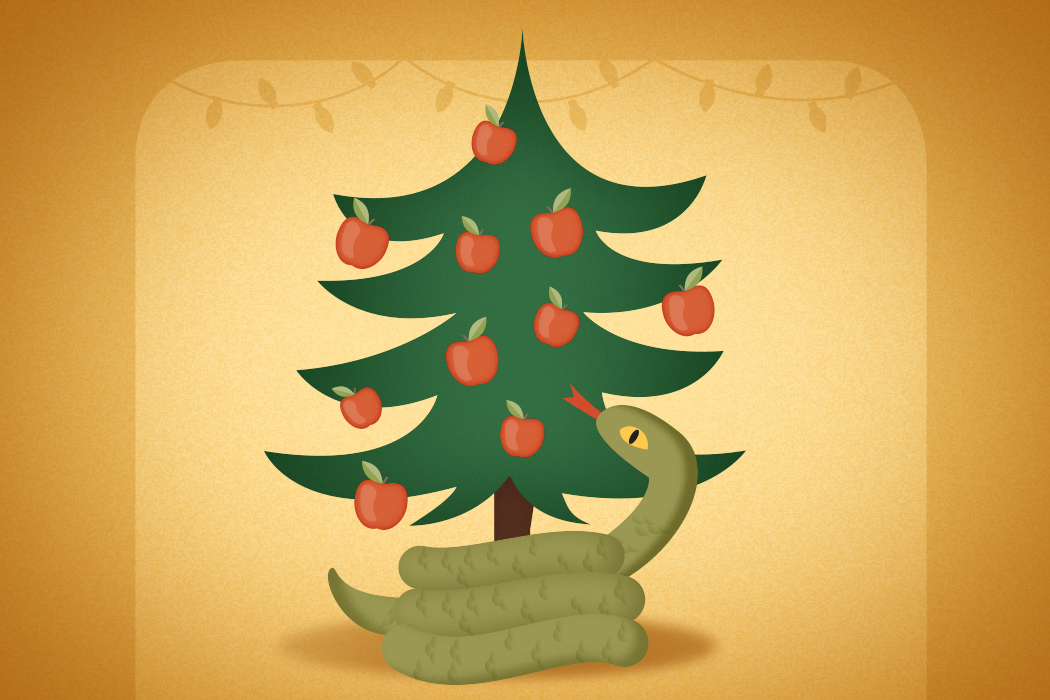
Illustration by Kaitlin O'Toole
The precursor to the Christmas tree
Adam and Eve, the ancestors of the human race, were first honoured as saints in the churches of Eastern Christianity and during the Middle Ages their cult spread into the West.
Though the Catholic church never officially recognized them with a feast day, popular veneration of Adam and Eve was widespread, particularly on December 24, when it was thought fitting that those responsible for the fall of mankind be linked with the birth of the saviour who came to redeem humanity.
Medieval dramas which told the story of Adam and Eve had, as a stage prop, a tree representing the Garden of Eden and the Tree of the Fruit of the Knowledge of Good and Evil. This tree was decorated with apples or round wafers representing the host of the Mass and it is this “Paradise Tree” which historians see as a precursor to the modern Christmas tree. This link is evident when we note that as late as the nineteenth century some American and German Christmas trees had images of Adam and Eve and the Serpent underneath them.
Godey’s magazine claimed “an orthodox Christmas-Tree will have the figures of our first parents at its foot, and the serpent twining itself.” The apples were placed on the table on Christmas Eve to recall those through whose sin mankind first fell as well as the Virgin Mary, the new Eve.
The above is an excerpt from The World Encyclopedia of Christmas, which was written by Gerry Bowler in the University of Manitoba’s history department.







